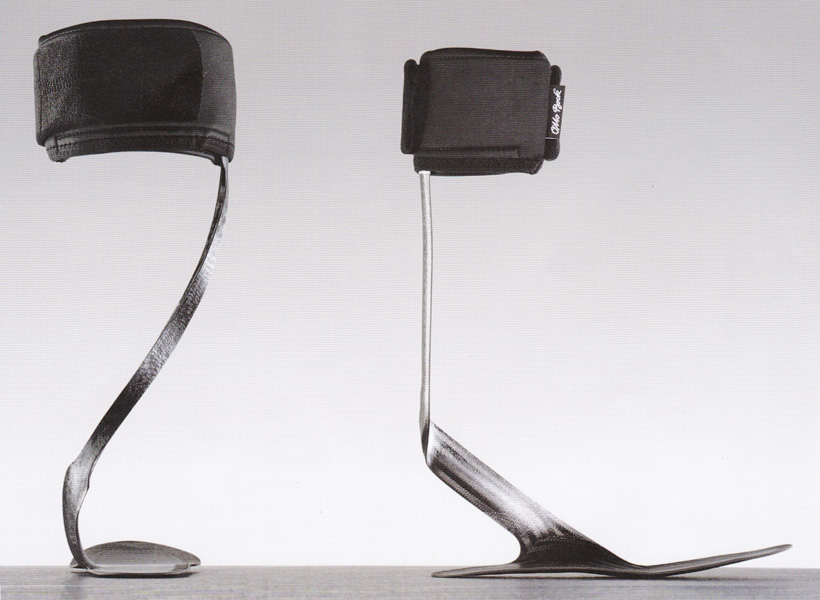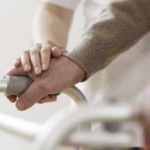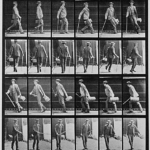Will an orthosis help you walk better with MS?
Difficulty walking due to muscle weakness, muscle spasms, and balance issues is common among people who have multiple sclerosis (MS).

You can move naturally with the WalkOn during the day. When you crouch down or walk up a set of stairs for example, you can put a natural load on the forefoot. The WalkOn is ideally suited for numerous everyday situations. Ottobock
By Brian P. Dunleavy, Everyday Health June 4, 2017
Medically Reviewed by Justin Laube MD
“For the MS patients who come into our clinic, the number one complaint, in addition to fatigue, is difficulty walking,” says Monika Patel, physical therapist and assistant clinical professor in the department of physical therapy and rehabilitation science at the University of California in San Francisco.
“They may tell us that their balance is off, or that they have experienced falls. Addressing a person’s capacity to walk is something I do during every evaluation and follow-up treatment session in people with MS,” she says.
Thankfully, there are a number of solutions available that can help improve your ability to walk, and one of the most effective is an orthosis, a device more commonly known as a brace, that is designed to support weakened muscles and joints.
Is an orthosis right for you? If so, how should you go about getting one? Here’s some expert advice to point you in the right direction.

WalkOn® Family of AFOs. Otto Bock
| What is an Orthosis? |
An orthosis as “an apparatus that supports, aligns, prevents, protects, or corrects deformities, or improves function for a section of the body,” according to The Pedorthic Footcare Association (PFA), an alliance of footcare specialists.
Although there are multiple types of these devices, most orthoses are designed to “wrap” or “cradle” the joints or areas of the body they are intended to help, the PFA says.
Orthoses can be prefabricated, or mass-produced; these often-simple devices are typically found in pharmacies, shoe and athletic stores, and other large retailers, as well as online.
Custom-made orthoses, on the other hand, are created specifically for an individual wearer’s unique condition, size, and shape, usually by a trained professional known as an orthotist.
Although there’s no harm necessarily in experimenting with over-the-counter orthoses on your own, Mark S. Hopkins, a certified prosthetist orthotist and CEO and president of Dankmeyer, a manufacturer of orthoses, says it’s best to consult your physician and physical therapist, who will in turn refer you to a specialist, to ensure you’re getting the best device for your needs.
“Some of the prefab orthoses work well,” says Hopkins. “In fact, your doctor or orthotist may recommend that you try an over-the-counter device first, depending on how severe your symptoms are, before having a custom product made. What I try to tell patients is that even if the thing you end up with is a simple device you bought at a pharmacy, if you’ve worked with your doctor, it’s a custom solution. What matters is that it’s the right device for the right person at the right time.”
| What does an Orthosis do? |
Because orthoses are generally available in retail stores — some for as little as $10 — you don’t necessarily need a prescription to try one. But if you work with your physician, a physical therapist, and an orthotist, these professionals can recommend a prescription orthosis for you. These can be premade and adjusted to your needs, or custom-built.
| Foot Drop |
According to Hopkins, the most common symptom of MS for which an orthosis is used is called foot drop, also known as “drop foot.” People with foot drop, he says, will notice that their toes point downward as they swing their foot from one step through another, which prevents a natural heel-to-toe motion and may lead to gait disruption and balance issues.
In so-called simple foot drop, people experience this only when walking; in more complex cases, in which muscle spasticity in the foot causes it to point downward continuously, they may also have difficulty even when standing still.
To address this issue with multiple sclerosis, Hopkins says he typically recommends an ankle-foot orthosis, or AFO, which effectively cradles the ankle joint and forces the foot into a heel-to-toe motion. He says that many people with MS wear AFOs on one or both feet.
| Knee Instability |
Another common problem in MS is knee instability, in which the knee either buckles and gives way, or hyperextends, extending outwardly behind the knee. This can also cause gait or balance issues.
For this, Hopkins prescribes a knee orthosis (KO) or, if the person also has foot drop, a knee-ankle-foot orthosis (KAFO). A KO is similar to the braces linemen wear in football. This device is designed to support the knee and allow it to work in tandem with the ankle and foot. A KAFO essentially combines a KO and an AFO.
| Hip Flexor Muscle Weakness |
Finally, Hopkins says, many people with MS, particularly in advanced stages of the condition, have hip flexor muscle weakness, which makes it difficult for them to swing or “advance their legs through space” as they walk.
A hip orthosis, such as a device called the Kickstart, may be used in physical therapy to strengthen the hip muscles, allowing people fitted with AFOs or KAFOs to walk on their own, with or without the use of canes, crutches, or other assistive devices.
| Design Innovations Improve Wearability |
New innovations in design have made conventional orthoses smaller and lighter, which in turn has made them more comfortable to wear. These streamlined designs have also helped people with MS overcome concerns about the effect these devices will have on how they look or their quality of life, Patel says.
“When you get to the point where getting around is a problem, and there’s a device that can help, you have to go for it,” she says. “But it certainly helps get ‘buy-in’ when the newer orthoses are so streamlined and simple. We don’t want people to see these devices as giving up freedom. We want people to see them as empowering.”
| Functional Electrical Stimulation |
It’s important to note that a conventional orthosis doesn’t treat the muscle weakness you experience with MS; it only helps your muscles overcome it by providing added support and stability.
A sub-type of orthoses called functional electrical stimulation (FES) devices help treat muscle weakness by firing small amounts of electricity at target nerves to stimulate the muscles to respond. Examples of FES devices include WalkAide and Bioness for foot drop.
These devices “do work well in the MS population,” Patel notes, although they’re “not appropriate for everyone” or for all activities.
FES devices are also expensive and not generally covered by insurance for people with multiple sclerosis, so many MS care providers recommend trying a conventional orthotic device first.
Source Everyday Health
Also see
Assistive Devices for Multiple Sclerosis in Web MD






